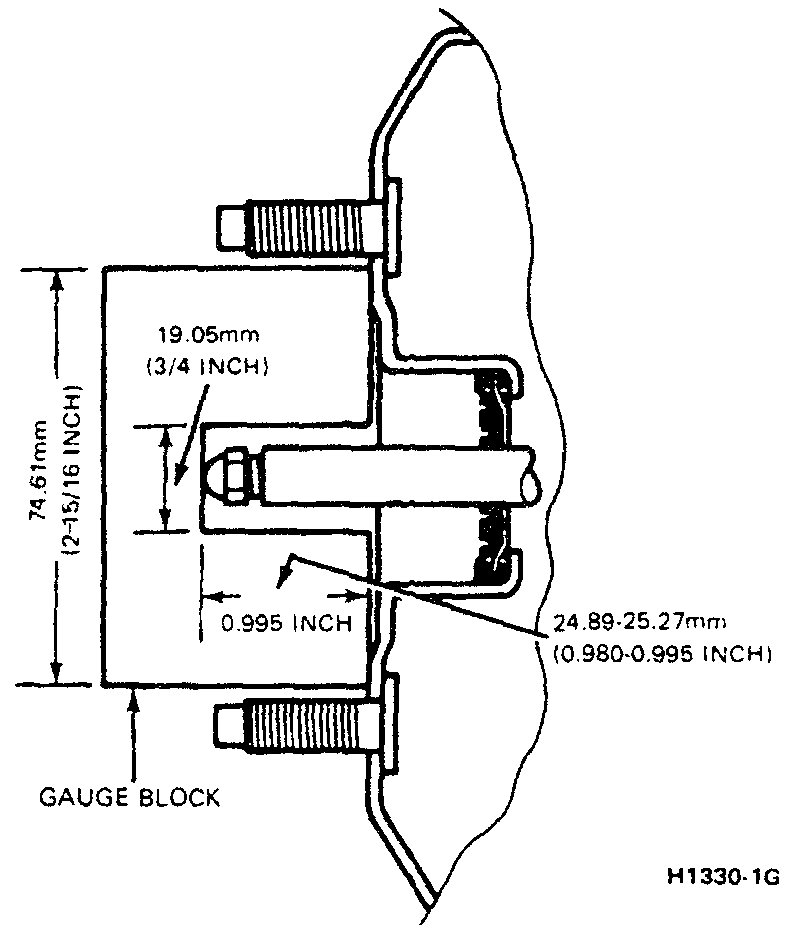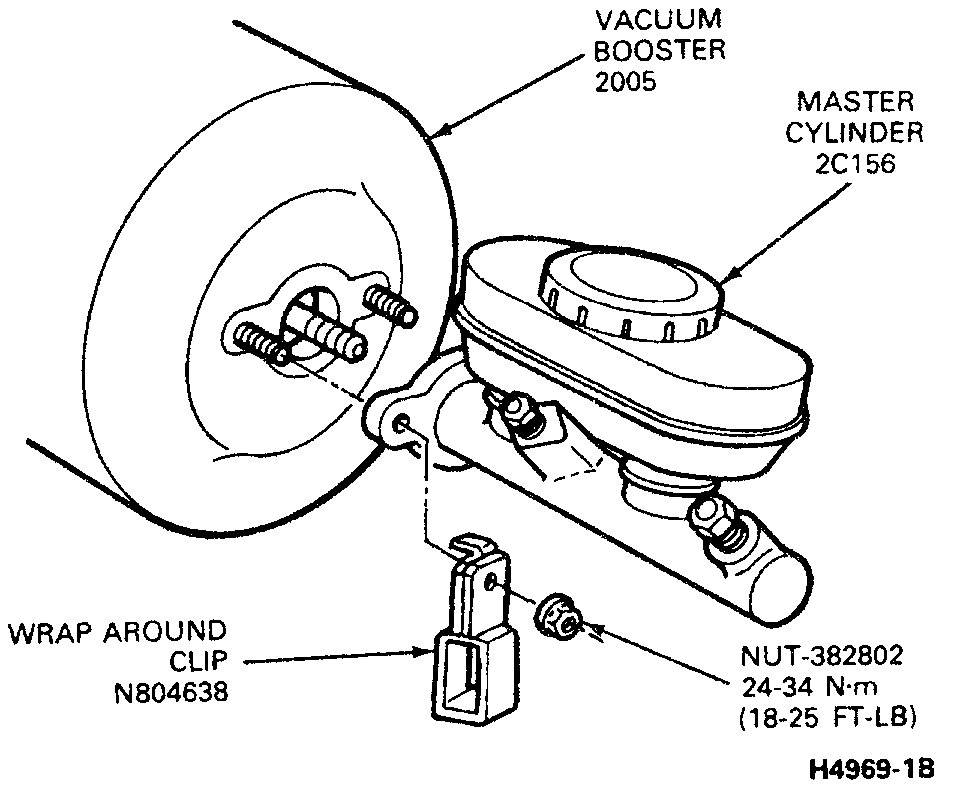Hi and thanks for using 2CarPros.
Here are the directions specific to bleeding the system on your truck. Follow them and see if it makes a difference. It includes bleeding the rear ABS valve.
Before bleeding, review the second set of directions to confirm you have the push rod properly adjusted. Pictures 1 and 2 correlate with this.
____________________________________
MANUAL BLEEDING
NOTE: Bleed primary and secondary hydraulic brake systems separately, bleeding longest line first on each system. Do not allow reservoir to run dry during bleeding operation. Never reuse fluid that has been drained from hydraulic system.
1. Loosen master cylinder to hydraulic line nuts and wrap shop cloths around tubing below fitting to absorb escaping brake fluid.
2. Depress brake pedal slowly forcing air trapped in master cylinder out at fitting.
3. Hold pedal down and tighten fittings, then release brake pedal.
NOTE: Releasing brake pedal before fittings are tightened will allow air to enter the master cylinder.
4. Repeat steps 1 through 3 until air ceases to escape at fittings and brake pedal is firm.
5. Bleed brakes as follows:
RR, LR, ABS valve, RF, LF
a. Pump pedal several times, then hold pedal down firmly.
B. With pedal firmly depressed, open bleeder screw on one rear brake until pedal fades, then close bleeder valve.
C. Repeat procedure until a continuous flow of brake fluid is released from bleeder valve.
D. Repeat steps 5a through 5c on other rear brake.
6. Bleed the Rear Antilock Brake System (RABS) valve.
7. Bleed the front brakes using same procedure as for rear brakes.
8. Check brake operation and ensure pedal is firm, road test vehicle.
______________________________________
INSTALLATION
Bendix Booster Push Rod Gauge Dimensions and Adjustment
1. Before installing the master cylinder, check the distance from the outer end of the booster assembly push rod, to the front face of the brake booster assembly. Turn the push rod adjusting screw in or out as required to obtain the specified length.
2. Position the master cylinder assembly over the booster push rod and onto the two studs on the booster assembly. Install the attaching nuts and tighten to 24-34 Nm (18-25 ft lbs).
3. Connect the hydraulic brake system lines to the master cylinder.
4. Connect fluid level indicator switch.
5. Bleed the master cylinder. Fill the reservoir of the master cylinder with heavy duty DOT 3 brake fluid to the fluid fill line. Install gasket and bleed the system. Refer to Brake Bleeding.
______________________
Once you do that, let me know what happens. If there are no leaks, the rubber brake hoses aren't expanding, the push rod is properly adjusted, and the rear brakes are properly adjusted, I have a feeling you got a bad master cylinder.
Let me know if this helps.
Joe
Images (Click to make bigger)
Tuesday, April 6th, 2021 AT 12:21 PM





